Pharmacy Schools Should Prepare Students for Workforce Challenges
Researchers conducted a survey assessing pharmacy students’ perceptions of pharmacist burnout and how that may impact their future career paths.
Pharmacy schools should focus on preparing students to enter the workforce amid burnout and working conditions being prominent topics in pharmacy, according to survey results published in JAPhA Practice Innovations.1
“The number of pharmacists has fluctuated over the years. The nation faced a pharmacist shortage in 2000, and then pharmacy schools expanded to meet the need,” wrote researchers from the University of Wisconsin-Madison School of Pharmacy.2 “The number of working pharmacists peaked in 2019, and the profession’s unemployment rate reached around 5% that same year. But in 2024, that number fell to just 2.8%.”
With pharmacists continuously vocalizing workforce complaints and burnout, the need for focusing on the physical and mental health of pharmacy employees has emerged. As the delivery of valued care starts with the conditions of providers such as physicians, pharmacists, nurses, and more, focusing on their well-being is crucial for patients around the world to receive the care they need.
However, with fluctuating rates of medical providers in various industries, there is almost always a call for better workforce conditions. In pharmacy, providers are working around the clock to keep up with the rising demand in dispensing drugs and medication management.
READ MORE:
“A survey assessing burnout in Ohio community-based pharmacists found that 67% of respondents were experiencing burnout, citing workload and performance metrics as stressors,” wrote the authors of the current study.1 “The results of these surveys are glimpses of the national pharmacist burnout that is being observed, showing that burnout is a crucial area of focus that needs to be addressed.”
Amid a struggling pharmacy workforce, the sustainability of pharmacy businesses is also under fire. Research shows that close to 30% of all US drug stores closed from 2011 to 2021, according to US News & World Report.3
Considering the challenges pharmacists navigate daily, some experts are looking toward the next generation of pharmacists. Curious as to how current industry issues will impact the nation’s newest pharmacy employees, the authors conducted a survey of Pennsylvania pharmacy students.
“The primary objective of this study was to assess advanced pharmacy practice experience (APPE) student perceptions of pharmacist burnout in different areas of practice,” they continued.1 “The secondary objective of this study was to assess how student perceptions of burnout may affect student career trajectory.”
Specifically focused on coping mechanisms, work environment, pharmacist advice to students, and their influence on student career paths, researchers distributed a 22-question survey to pharmacy students in Pennsylvania during the spring 2024 semester. They approached the 7 pharmacy schools in Pennsylvania, and 4 were included in the final analysis.
A total of 169 students provided fully completed survey responses.
“Through this research survey, we found that APPE student pharmacists have observed pharmacist burnout to some extent throughout different areas of pharmacy practice. This is consistent with established research on pharmacist burnout,” the authors wrote.1 “When deciding on a career path, it was found that students changed their interests based on perceived work-life balance and work environment. When tasked with ranking the most important aspects when deciding on a career, flexibility was one of the most selected answers.”
Most of the students observed burnout among community chain pharmacists (90%), then community independent (69%), and hospital and health system (65%). Translating to students’ high perception of workforce burnout, less than 40% of preceptors—or pharmacy school mentors—frequently provided advice on how to prevent burnout.
For students’ career interests, 70% of survey respondents changed their career journeys from year 1 to APPE rotations. Since starting APPE rotations, however, 54% of students have changed career interests.
“Research shows that burnout may be more prevalent in those [who are at] early [stages] in their career. [This raises] important questions when graduating student pharmacists are conflicted on whether to continue working in pharmacy or switch to a different career owing to burnout or other factors.”
No matter how students perceive working in a pharmacy, those at the end of their learning careers have crucial decisions to make before beginning their journeys within pharmacy. To prepare future pharmacists and the patients they’ll be treating, students must understand the potential for challenges and barriers in the pharmacy profession.
To correct the declining health care workforces in various medical industries, research data suggest focusing on those students who are just getting ready to emerge as leaders within health care.
“Continuous preceptor development could be an area of focus for pharmacy schools to not only strengthen relationships with preceptors in different areas of pharmacy practice but also help maintain students during a time of decreased pharmacy school enrollment,” concluded the authors.1 “Further research is needed to assess how preceptor development can additionally affect student enrollment, career paths, and preparedness to manage burnout.”
READ MORE:
Are you ready to elevate your pharmacy practice? Sign up today for our
References
1. Ayad G, Zupec J, Hamper J, Melissen P, Dempsey K, Huynh L. Assessing Pennsylvania advanced pharmacy practice experience student perceptions of pharmacist burnout in various areas of pharmacy practice. JAPhA Pract Innov. 2025;2(3):100049. doi.10.1016/j.japhpi.2025.100049
2. Etter N, Gerhards K. Emerging trends from the 2024 National Pharmacy Workforce Study. University of Wisconsin-Madison School of Pharmacy. June 16, 2025. Accessed July 9, 2025. https://pharmacy.wisc.edu/2025/06/16/emerging-trends-from-the-2024-national-pharmacy-workforce-study/
3. Nearly 30% of US drugstores closed in one decade, study shows. US News & World Report. December 3, 2024. Accessed July 9, 2025. https://www.usnews.com/news/health-news/articles/2024-12-03/nearly-30-of-us-drugstores-closed-in-one-decade-study-shows
Newsletter
Pharmacy practice is always changing. Stay ahead of the curve with the Drug Topics newsletter and get the latest drug information, industry trends, and patient care tips.




































































































































